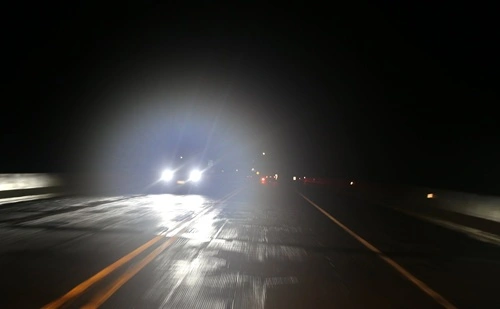Flashing headlights is a common practice on American roads. Drivers often use it to warn oncoming traffic of hazards, signal another driver to proceed, or alert others about upcoming police presence. But a question arises: Is flashing your headlights illegal in 2025? The answer depends largely on why, where, and how the headlights are flashed.
1. Headlight Flashing as a Form of Communication

Across many states, flashing headlights is recognized as a form of communication similar to using a horn. Drivers may briefly flash their lights to let someone merge, signal a left-turning vehicle, or warn others of an obstacle on the road. In most cases, this behavior is not illegal, as long as it does not interfere with traffic safety.
Many courts in the U.S. have even ruled that flashing headlights can be considered a form of protected speech under the First Amendment, especially when used to warn other drivers about speed traps. These rulings reinforce the idea that not every instance of flashing headlights constitutes unlawful behavior.
2. When Flashing Headlights Can Be Illegal
While generally permissible, certain situations can make flashing headlights unlawful. The specific rules vary by state, but violations usually fall into three categories:
A. Obstructing or Endangering Traffic
If flashing headlights is done excessively or aggressively—such as repeatedly blinding an oncoming driver it may be considered reckless driving or failure to use headlights safely. High-beam flashes that impair visibility can lead to citations.
B. Using High Beams Improperly
Most states have clear rules about high-beam usage. Common requirements include:
- Dimming high beams within 500 feet of oncoming traffic
- Turning off high beams within 300 feet when following another vehicle
Flashing high beams in a way that violates these rules can result in a traffic infraction.
C. Impersonating Law Enforcement
In rare cases, flashing headlights in certain patterns—especially when combined with other behaviors may be interpreted as attempting to mimic emergency vehicles. This is strictly prohibited and can lead to serious penalties.
3. Flashing Headlights to Warn About Police: Illegal or Not?
This is one of the most debated points. Some states have tried to penalize drivers for flashing headlights to warn others of speed traps. However, courts in states like Missouri, Florida, and Tennessee have ruled that such conduct is protected speech, making it legal to warn other drivers in many jurisdictions.
Still, not every state has the same interpretation. Some local laws may still treat it as interfering with law enforcement operations. Because rules vary widely, drivers should understand the laws specific to their state.
4. State-by-State Differences
No nationwide federal law prohibits headlight flashing. Instead, each state sets its own regulations. While most states allow momentary flashing of headlights, the key limitations relate to:
- High-beam misuse
- Intent to distract or blind another driver
- Behavior that may compromise road safety
This means a driver could legally flash headlights in one state but receive a ticket for the same behavior in another.
5. Practical Guidance for Drivers
To avoid legal trouble, drivers should keep the following best practices in mind:
- Use headlight flashes sparingly and only when necessary
- Avoid using high beams in a way that blinds or distracts others
- Follow state-specific rules on high-beam distance requirements
- Do not use headlights to mimic emergency signals
As long as the flashing does not jeopardize safety or violate high-beam regulations, it is generally considered lawful.
Conclusion
Flashing your headlights is not universally illegal in the United States. In most states, it is acceptable and sometimes even protected as a form of communication among drivers. The legality depends on the context, safety implications, and state regulations. Drivers who use their headlights responsibly and remain aware of local laws can safely and legally communicate with others on the road.


